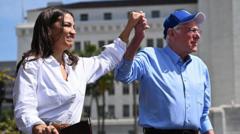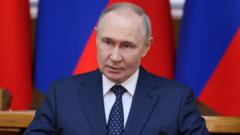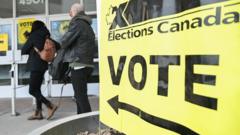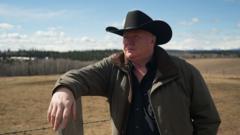Democratic unity falters as key figures and constituents express varying opinions on how the party should respond to current political challenges.
What Should Democrats Do Next? Unpacking Divergent Views on Party Strategy

What Should Democrats Do Next? Unpacking Divergent Views on Party Strategy
As Democrats grapple with internal fractures and external pressures, voices emerge advocating for a renewed course of action.
In the wake of turbulent political times, Democrats find themselves at a crossroads. With President Trump's recent tenure presenting both obstacles and opportunities, discussions about the party's future have intensified. Amidst this backdrop, a recent rally in Bakersfield, California, co-hosted by Senator Bernie Sanders and Congresswoman Alexandria Ocasio-Cortez, sparked animated debate about the party's direction.
The event, part of their "Fighting Oligarchy" tour, attracted a fervent crowd in a predominantly conservative region. Attendees voiced their frustrations not only with Trump but also with their own party's perceived failures to counter his policies effectively. Many claimed that the Democratic leadership had lost touch with grassroots concerns, advocating for a more robust opposition to Republican efforts.
Polls indicate a growing discontent among Democrats, with over half expressing dissatisfaction with current leadership and the party's strategies. Recent survey data illustrates a marked shift in sentiment, with 57% urging their representatives to resist the Republican agenda, contrasting sharply with a similar poll from 2017 that showed a preference for bipartisan cooperation.
Prominent figures within the party are increasingly vocal about the urgent need for concrete action. For instance, former Congressman Conor Lamb emphasizes the necessity of addressing specific issues affecting everyday Americans, suggesting that survival of their political ideals hinges on immediate, impactful efforts.
While Sanders and Ocasio-Cortez advocate a focus on economic grievances that resonate with a broader audience, there is a diverging opinion on how the Democratic Party should evolve. Some argue for a moderation of views to engage more centrist voters, a stance recently taken by California Governor Gavin Newsom. His approach includes hosting dialogues with controversial figures to build bridges across the political spectrum.
This ongoing debate over the party's identity is underscored by a generational divide, with younger party members like David Hogg calling for drastic changes and the infusion of fresh ideas. As Hogg pledges significant funding for primary challengers to centrist Democrats, long-standing strategists like James Carville question whether such tactics could undermine electoral success.
Amidst the rhetoric, many constituents express a universal call for decisive action, seeking clear indications that Democratic leaders truly represent their interests. A sentiment of urgency permeates the dissatisfaction felt by rally-goers, pointing to a growing desire for a seismic shift in the party's strategy. As debates continue, it remains clear: how Democrats respond could shape their political viability for years to come.
The event, part of their "Fighting Oligarchy" tour, attracted a fervent crowd in a predominantly conservative region. Attendees voiced their frustrations not only with Trump but also with their own party's perceived failures to counter his policies effectively. Many claimed that the Democratic leadership had lost touch with grassroots concerns, advocating for a more robust opposition to Republican efforts.
Polls indicate a growing discontent among Democrats, with over half expressing dissatisfaction with current leadership and the party's strategies. Recent survey data illustrates a marked shift in sentiment, with 57% urging their representatives to resist the Republican agenda, contrasting sharply with a similar poll from 2017 that showed a preference for bipartisan cooperation.
Prominent figures within the party are increasingly vocal about the urgent need for concrete action. For instance, former Congressman Conor Lamb emphasizes the necessity of addressing specific issues affecting everyday Americans, suggesting that survival of their political ideals hinges on immediate, impactful efforts.
While Sanders and Ocasio-Cortez advocate a focus on economic grievances that resonate with a broader audience, there is a diverging opinion on how the Democratic Party should evolve. Some argue for a moderation of views to engage more centrist voters, a stance recently taken by California Governor Gavin Newsom. His approach includes hosting dialogues with controversial figures to build bridges across the political spectrum.
This ongoing debate over the party's identity is underscored by a generational divide, with younger party members like David Hogg calling for drastic changes and the infusion of fresh ideas. As Hogg pledges significant funding for primary challengers to centrist Democrats, long-standing strategists like James Carville question whether such tactics could undermine electoral success.
Amidst the rhetoric, many constituents express a universal call for decisive action, seeking clear indications that Democratic leaders truly represent their interests. A sentiment of urgency permeates the dissatisfaction felt by rally-goers, pointing to a growing desire for a seismic shift in the party's strategy. As debates continue, it remains clear: how Democrats respond could shape their political viability for years to come.























